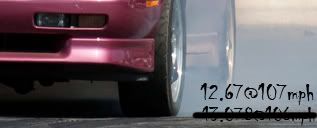My fuel mileage has been lower than it should be for a little while now. The mileage was especially poor in the winter. I do the basic routine maintenance like I should. I did an initial OBDII scan/log with a different program before I got HPT. My LTFT levels were always really low at idle (-15 to –20%). So I did the basic troubleshooting (checked fuel line pressure, compared fuel pressure drop in each injector, air filter good (new K&N filter), no air induction restrictions that I could see, sprayed MAF sensor screen clean, etc). No help. I recently bought HPT to begin to do some tuning and scanned a trip (I want to figure out what the current problem is before I start any tuning). I was definitely noticing some KR with my normal 87 octane (up to 9 degrees of KR at times, mostly at loading – hills, etc). I then tried a tank of 91 octane fuel. I did see less, there were still times that my engine did KR.
I did some reading already and learned the V6 knock sensors are particularly sensitive. My PCM calibration is stock (for now) except I lowered the fan-on temps. I am thinking the LTFT leaning-compensation, KR, and reduced mpg are all related but I can't quite pinpoint why. I have no codes, so I assume no EGR problems. Please let me know your thoughts. I have attached 2 HPT scans: 1 with 87 octane and the other with 91 octane fuel.
I did some reading already and learned the V6 knock sensors are particularly sensitive. My PCM calibration is stock (for now) except I lowered the fan-on temps. I am thinking the LTFT leaning-compensation, KR, and reduced mpg are all related but I can't quite pinpoint why. I have no codes, so I assume no EGR problems. Please let me know your thoughts. I have attached 2 HPT scans: 1 with 87 octane and the other with 91 octane fuel.




 since there is no sniffer test here in MI.
since there is no sniffer test here in MI. 


Comment